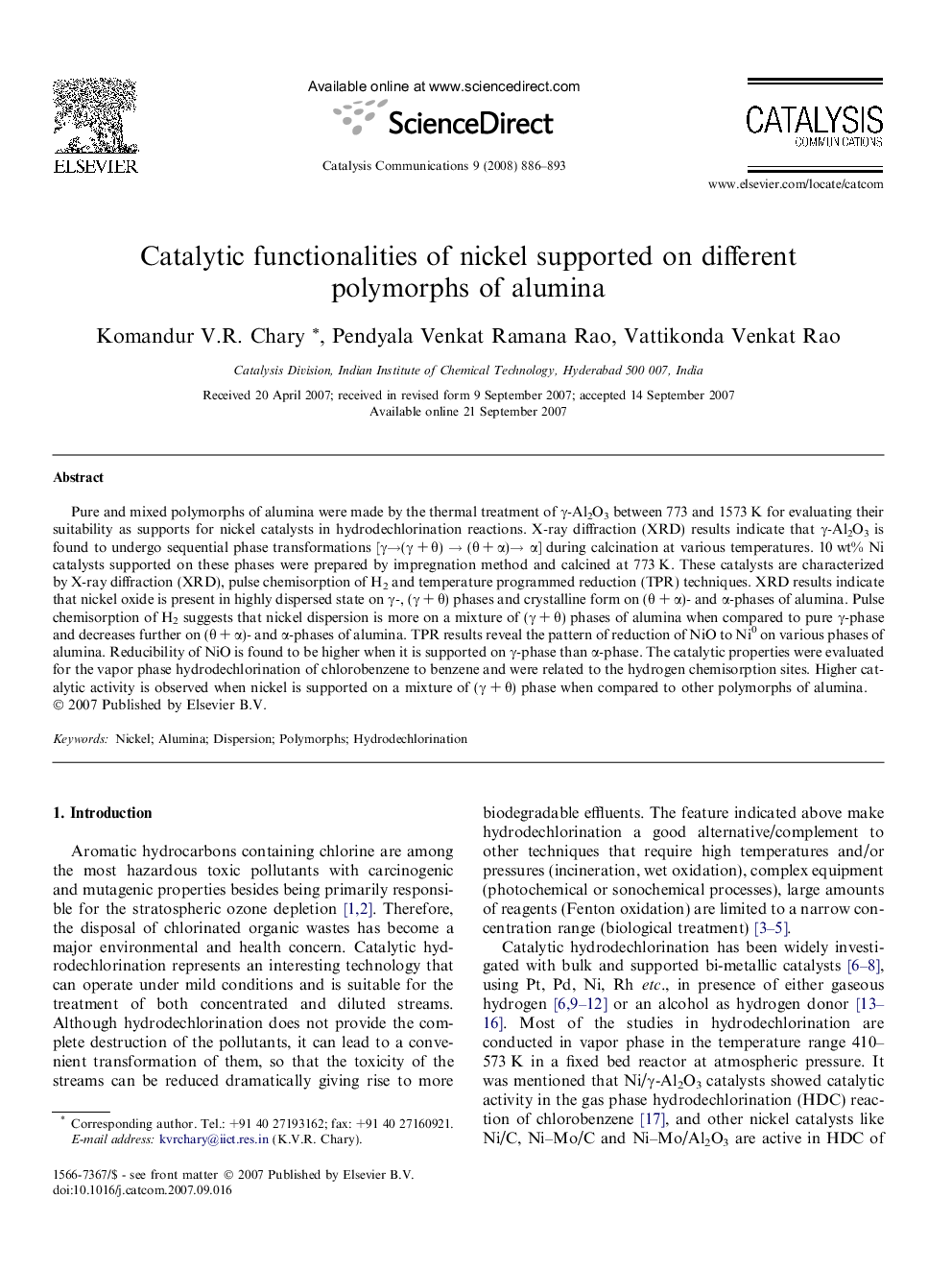| Article ID | Journal | Published Year | Pages | File Type |
|---|---|---|---|---|
| 52273 | Catalysis Communications | 2008 | 8 Pages |
Pure and mixed polymorphs of alumina were made by the thermal treatment of γ-Al2O3 between 773 and 1573 K for evaluating their suitability as supports for nickel catalysts in hydrodechlorination reactions. X-ray diffraction (XRD) results indicate that γ-Al2O3 is found to undergo sequential phase transformations [γ→(γ + θ) → (θ + α)→ α] during calcination at various temperatures. 10 wt% Ni catalysts supported on these phases were prepared by impregnation method and calcined at 773 K. These catalysts are characterized by X-ray diffraction (XRD), pulse chemisorption of H2 and temperature programmed reduction (TPR) techniques. XRD results indicate that nickel oxide is present in highly dispersed state on γ-, (γ + θ) phases and crystalline form on (θ + α)- and α-phases of alumina. Pulse chemisorption of H2 suggests that nickel dispersion is more on a mixture of (γ + θ) phases of alumina when compared to pure γ-phase and decreases further on (θ + α)- and α-phases of alumina. TPR results reveal the pattern of reduction of NiO to Ni0 on various phases of alumina. Reducibility of NiO is found to be higher when it is supported on γ-phase than α-phase. The catalytic properties were evaluated for the vapor phase hydrodechlorination of chlorobenzene to benzene and were related to the hydrogen chemisorption sites. Higher catalytic activity is observed when nickel is supported on a mixture of (γ + θ) phase when compared to other polymorphs of alumina.
